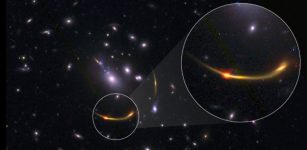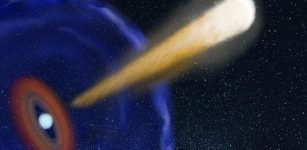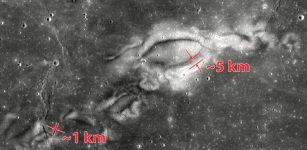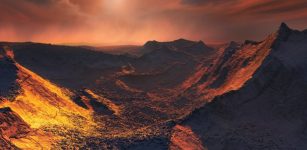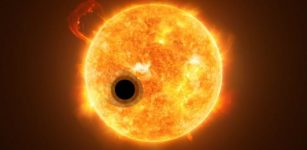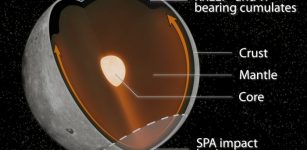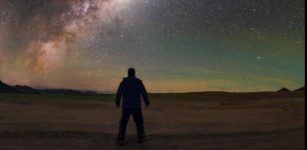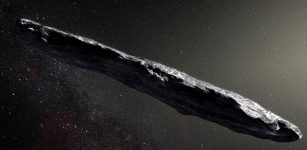Astronomers Observe Two Giant Galaxy Clusters At The Verge Of Colliding
Eddie Gonzales Jr. – MessageToEagle.com – Two giant clusters of galaxies that are just about to collide have been discovered by for the first time by an international team of astronomers.
Such galaxies and clusters of galaxies—are thought to grow by collisions and mergers.
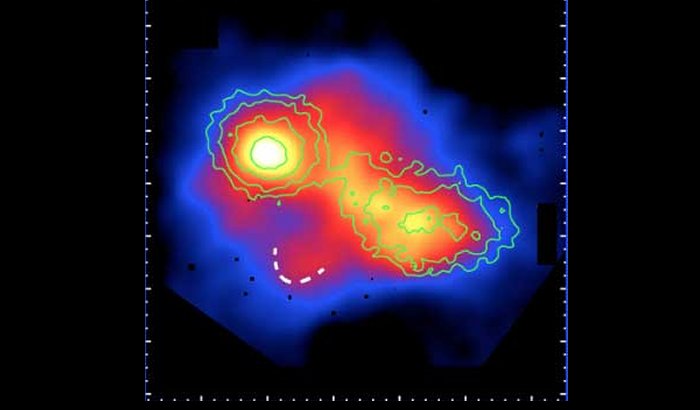 Image taken in the x-ray spectrum shows two galaxy clusters in the early stage of collision. The white dotted line shows the pre-merger shock. Image credit: RIKEN
Image taken in the x-ray spectrum shows two galaxy clusters in the early stage of collision. The white dotted line shows the pre-merger shock. Image credit: RIKEN
“These clusters show the first clear evidence for this type of merger shock”, first author Liyi Gu from RIKEN national science institute in Japan and SRON Netherlands Institute for Space Research, said in a press release.
“The shock created a hot belt region of 100-million-degree gas between the clusters, which is expected to extend up to, or even go beyond the boundary of the giant clusters. Therefore the observed shock has a huge impact on the evolution of galaxy clusters and large scale structures.”
Astronomers are planning to collect more ‘snapshots’ to ultimately build up a continuous model describing the evolution of cluster mergers.
“More merger clusters like this one will be found by eROSITA, an X-ray all-sky survey mission that will be launched this year,” SRON-researcher Hiroki Akamatsu said.
“Two other upcoming X-ray missions, XRISM and Athena, will help us understand the role of these colossal merger shocks in the structure formation history.”
Clusters of galaxies are the largest known bound objects and consist of hundreds of galaxies that each contain hundreds of billions of stars. Ever since the Big Bang, these objects have been growing by colliding and merging with each other. Due to their large size, with diameters of a few million light years, these collisions can take about a billion years to complete. After the dust has settled, the two colliding clusters will have merged into one bigger cluster.
Because the merging process takes much longer than a human lifetime, we only see snapshots of the various stages of these collisions.
Written by Eddie Gonzales Jr. – MessageToEagle.com Staff

